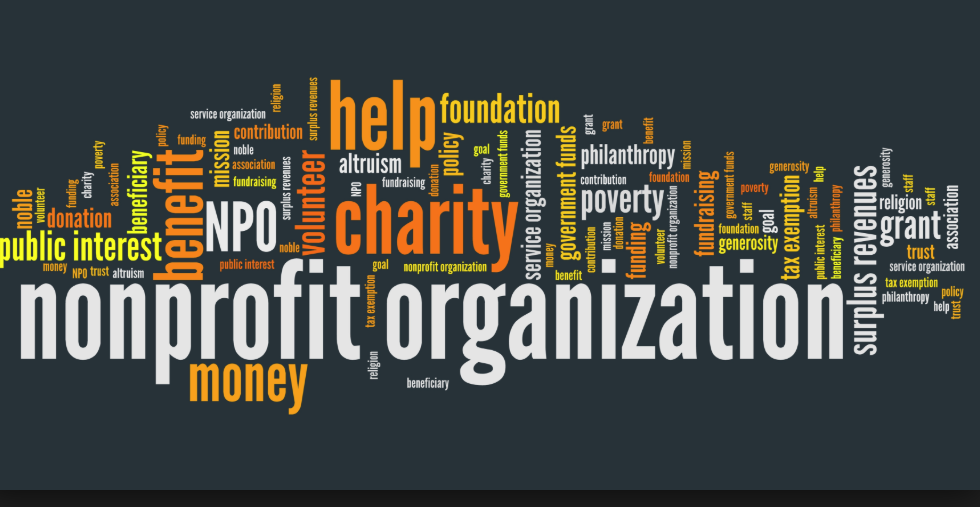Nonprofit Firm: Encouraging Organizations to Drive Social Adjustment
Nonprofit Firm: Encouraging Organizations to Drive Social Adjustment
Blog Article
The Value of Partnership and Collaboration for a Nonprofit Company in Maximizing Resources and Enhancing Community Interaction
In the realm of not-for-profit companies, partnership and collaboration arise as necessary systems for fostering and magnifying resources neighborhood engagement. These alliances not only improve program effectiveness but additionally grow a much deeper sense of community participation and possession.
Advantages of Collaboration

Moreover, collaboration cultivates technology by motivating the exchange of ideas and best practices. When companies interact, they can explore varied perspectives, leading to innovative services that might not emerge alone. This common analytical approach can ultimately improve service delivery and program results.
Additionally, collaborative efforts can enhance community engagement. When nonprofits companion with one an additional, they can set in motion wider assistance from stakeholders, consisting of volunteers, contributors, and neighborhood members. This cumulative involvement not just raises exposure however likewise enhances the integrity of the getting involved companies.
Building Strategic Partnerships
Cooperation amongst not-for-profit agencies often brings about the development of strategic partnerships, which are crucial for maximizing impact and achieving common objectives. These collaborations make it possible for organizations to leverage each various other's staminas, enhancing solution distribution and broadening outreach. By aligning goals and objectives, nonprofits can produce a synergistic result that intensifies their reach and efficiency within the area.
Building strategic collaborations requires cautious preparation and common understanding. Organizations must first recognize potential companions that share similar worths and objectives, making sure compatibility in mission and vision. Developing open lines of interaction cultivates depend on, enabling companions to review duties, sources, and assumptions transparently. Collective efforts and normal conferences can aid preserve momentum and address obstacles proactively.
In addition, clearly specified responsibilities and functions are essential for accountability and success. Formalizing the partnership through created arrangements can provide a framework for collaboration, describing the range of work, performance metrics, and evaluation methods. By fostering these calculated partnerships, not-for-profit agencies can enhance their capacity to deal with neighborhood requirements, innovate options, and set in motion sources effectively, eventually bring about a more considerable and lasting influence in the areas they offer.
Sharing Resources Successfully
Exactly how can nonprofit companies maximize their effect through effective resource sharing? By purposefully collaborating with various other organizations, nonprofits can improve their functional performance and expand their reach within the area. Resource sharing entails merging various possessions, consisting of funds, employees, expertise, and centers, to resolve common objectives extra successfully.

In addition, leveraging each various other's strengths can foster technology. By trading expertise and finest methods, companies can improve service delivery and develop new solutions to area obstacles. Efficient resource sharing also grows a feeling of unity, enhancing the concept that partnership is crucial for attaining substantial social effect.
Involving the Area
What techniques can not-for-profit firms employ to properly involve their areas? recommended you read Making use of numerous systems, such as social media, e-newsletters, and community forums, allows companies to distribute info, obtain responses, and foster discussion.
Additionally, forming collaborations with local companies can enhance outreach efforts. nonprofit agency. Working together with schools, companies, and various other nonprofits can amplify resources and produce an extra considerable assistance network, enabling joint campaigns that reverberate with neighborhood needs
In addition, holding area occasions, workshops, and volunteer opportunities can help with much deeper engagement. These activities produce a feeling of belonging and urge active involvement, enabling individuals to add to the firm's goals while developing connections with fellow community participants.
Measuring Collective Success
Evaluating the efficiency of collective efforts is important for nonprofit firms seeking to optimize their influence. Determining collaborative success entails developing clear, measurable objectives and making use of a selection of metrics to analyze performance. Key indicators might include the number of collaborations developed, sources shared, and the concrete results attained via partnership.
To efficiently gauge success, nonprofits need to implement a framework that incorporates both quantitative and qualitative data. Studies and interviews can offer insights into stakeholder satisfaction and the regarded value of collaborations. In addition, tracking metrics such as solution reach, area interaction degrees, and financial effectiveness can offer a detailed view of joint efficiency.
Regular evaluations need to be performed to recognize areas of improvement and best practices. This repetitive procedure not only boosts liability however also fosters a society of constant discovering within the organization - nonprofit agency. By transparently sharing examination results discover here with stakeholders and companions, nonprofits can strengthen relationships and construct trust
Ultimately, measuring collective success allows not-for-profit agencies to refine their approaches, designate resources a lot more successfully, and boost their mission-driven initiatives, resulting in a better cumulative impact on the neighborhoods they offer.
Conclusion

In the original source the realm of nonprofit firms, partnership and collaboration emerge as important devices for promoting and amplifying sources community interaction - nonprofit agency. By cultivating these calculated alliances, nonprofit firms can enhance their capability to address neighborhood needs, introduce services, and set in motion sources properly, ultimately leading to a much more sustainable and substantial effect in the neighborhoods they offer
By strategically working together with various other organizations, nonprofits can improve their functional efficiency and prolong their reach within the area.What techniques can not-for-profit agencies utilize to properly involve their communities?Partnership and collaboration stand as essential pillars for not-for-profit firms aiming to take full advantage of resources and improve area involvement.
Report this page